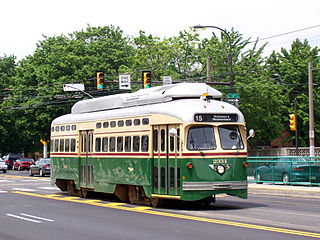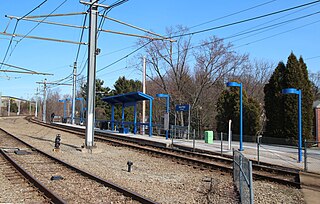

Pittsburgh Light Rail 47D | ||||||||||||||||||||||||||||||||||||||||||||||||||||||||||||||||||||||||||||||||||||||||||||||||||||||||||||||||||||||||||||||||||||||||||||||||||||||||||||||||||||||||||||||||||||||||
|---|---|---|---|---|---|---|---|---|---|---|---|---|---|---|---|---|---|---|---|---|---|---|---|---|---|---|---|---|---|---|---|---|---|---|---|---|---|---|---|---|---|---|---|---|---|---|---|---|---|---|---|---|---|---|---|---|---|---|---|---|---|---|---|---|---|---|---|---|---|---|---|---|---|---|---|---|---|---|---|---|---|---|---|---|---|---|---|---|---|---|---|---|---|---|---|---|---|---|---|---|---|---|---|---|---|---|---|---|---|---|---|---|---|---|---|---|---|---|---|---|---|---|---|---|---|---|---|---|---|---|---|---|---|---|---|---|---|---|---|---|---|---|---|---|---|---|---|---|---|---|---|---|---|---|---|---|---|---|---|---|---|---|---|---|---|---|---|---|---|---|---|---|---|---|---|---|---|---|---|---|---|---|---|---|
| ||||||||||||||||||||||||||||||||||||||||||||||||||||||||||||||||||||||||||||||||||||||||||||||||||||||||||||||||||||||||||||||||||||||||||||||||||||||||||||||||||||||||||||||||||||||||
The 47D Drake (often abbreviated as the 47D) was a PCC trolley line that was part of the Pittsburgh Light Rail system.


Pittsburgh Light Rail 47D | ||||||||||||||||||||||||||||||||||||||||||||||||||||||||||||||||||||||||||||||||||||||||||||||||||||||||||||||||||||||||||||||||||||||||||||||||||||||||||||||||||||||||||||||||||||||||
|---|---|---|---|---|---|---|---|---|---|---|---|---|---|---|---|---|---|---|---|---|---|---|---|---|---|---|---|---|---|---|---|---|---|---|---|---|---|---|---|---|---|---|---|---|---|---|---|---|---|---|---|---|---|---|---|---|---|---|---|---|---|---|---|---|---|---|---|---|---|---|---|---|---|---|---|---|---|---|---|---|---|---|---|---|---|---|---|---|---|---|---|---|---|---|---|---|---|---|---|---|---|---|---|---|---|---|---|---|---|---|---|---|---|---|---|---|---|---|---|---|---|---|---|---|---|---|---|---|---|---|---|---|---|---|---|---|---|---|---|---|---|---|---|---|---|---|---|---|---|---|---|---|---|---|---|---|---|---|---|---|---|---|---|---|---|---|---|---|---|---|---|---|---|---|---|---|---|---|---|---|---|---|---|---|
| ||||||||||||||||||||||||||||||||||||||||||||||||||||||||||||||||||||||||||||||||||||||||||||||||||||||||||||||||||||||||||||||||||||||||||||||||||||||||||||||||||||||||||||||||||||||||
The 47D Drake (often abbreviated as the 47D) was a PCC trolley line that was part of the Pittsburgh Light Rail system.
The 47D was the last line in the city of Pittsburgh, Pennsylvania to use PCC streetcars. It originally was part of an interurban trolley line that ran from Pittsburgh to Washington, PA [1] until 1953, when the service was cut back to the Allegheny County border at Drake [2] and all trolleys turned using the newly constructed loop, situated below the trestle. [3] [4] The line was designated as 36 Shannon-Drake by Pittsburgh Railways, and with the Stage I reconstruction in 1984 the route was re-designated as 47D Drake via Overbrook. [5] After the 1993 closure of the Overbrook route the service became a shuttle between Castle Shannon and Drake and was renumbered 47D Drake shuttle, and continued to operate as such until closed on September 4, 1999. Port Authority's Stage II reconstruction plan had originally included rebuilding the Drake line as well as the Overbrook and Library lines, however, only the Overbrook and small portions of the Library line have currently been rebuilt, and it remains unknown if or when the Drake line will be rebuilt.
Much of the Drake line, as it was when shut down, still exists, albeit in derelict condition. The stretch of track from the Drake Loop to the "S" curve near the former Walthers stop was removed not long after the line was discontinued in 1999. When Port Authority of Allegheny County took delivery of new LRVs for use on the rebuilt Overbrook line in 2004, the new cars were tested on the Drake line prior to entering revenue service. Power wire beyond Fort Couch Road to the end of the line were removed at some point after,[ when? ] however the segment between there and Dorchester where the South Hills Village spur joins the Drake Line is still maintained and powered, and the tunnel beneath Fort Couch Road is occasionally used for storing non-revenue rail vehicles.
During the final years of operation, three PCCs were used with a fourth kept as reserve. Car #4004 was donated to the Pennsylvania Trolley Museum where it has become part of a collection of historic streetcars and trolleys from all across the United States and other nations. [6] The San Francisco Municipal Railway (Muni) acquired #4008 and #4009 in an internet auction in 2002 [7] for $5,000 each. However, they needed to be re-gauged and differ significantly from other PCCs in that agency's fleet, [8] and were ultimately scrapped in 2019. [9]

The Ashmont–Mattapan High-Speed Line, commonly referred to as the Mattapan Trolley, is a partially grade-separated light rail line which forms part of the MBTA's Red Line rapid transit line. The line, which runs through Boston and Milton, Massachusetts, opened on August 26, 1929, as a conversion of a former commuter rail line. It exclusively uses PCC streetcars built in the 1940s. Passengers must transfer at Ashmont to access the rest of the Red Line, which uses heavy rail metro rolling stock.

Brookline is a neighborhood in the South Hills of Pittsburgh, Pennsylvania, United States. It takes its name from the town in Massachusetts, which early settlers felt bore a resemblance to the area.

Pittsburgh Regional Transit is the second-largest public transit agency in Pennsylvania and the 20th-largest in the United States. The state-funded agency is based in Pittsburgh and is overseen by a CEO and a board of unpaid volunteer directors, some of whom are appointed by the county executive and approved by the county council; and one each by the majority and minority leaders by each political party. After operating as the Port Authority of Allegheny County for most of its history, the agency rebranded under its current name in June 2022. In 2023, the system had a ridership of 39,730,300.

Route 15, the Girard Avenue Line, is a trolley line operated by the Southeastern Pennsylvania Transportation Authority (SEPTA) along Girard Avenue through North and West Philadelphia, Pennsylvania, United States. As of 2007, it is the only surface trolley line in the City Transit Division that is not part of the Subway–Surface Trolley Lines. SEPTA PCC II vehicles are used on the line.

The Baltimore Streetcar Museum (BSM) is a 501(c)(3) nonprofit museum. It is located at 1911 Falls Road in Baltimore, Maryland. The museum is dedicated to preserving Baltimore's public transportation history, especially the streetcar era.

Pittsburgh Railways was one of the predecessors of Pittsburgh Regional Transit. It had 666 PCC cars, the third largest fleet in North America. It had 68 streetcar routes, of which only three are used by the Port Authority as light rail routes. With the Port Authority's Transit Development Plan, many route names will be changed to its original, such as the 41D Brookline becoming the 39 Brookline. Many of the streetcar routes have been remembered in the route names of many Port Authority buses.

The Pennsylvania Trolley Museum is a museum in Washington, Pennsylvania, dedicated to the operation and preservation of streetcars and trolleys. The museum primarily contains historic trolleys from Pennsylvania, but its collection includes examples from nearby Toledo, New Orleans, and even an open-sided car from Brazil. Many have been painstakingly restored to operating condition. Other unique cars either awaiting restoration or that are incompatible with the 5' 2-1/2" Pennsylvania trolley gauge track are on display in a massive trolley display building. Notable examples of static display include a J.G. Brill “Brilliner” car, locomotives, and a horse car from the early days of Pittsburgh’s public transit systems.

The Pittsburgh Light Rail is a 26.2-mile (42.2 km) light rail system in Pittsburgh, Pennsylvania, and surrounding suburbs. It operates as a deep-level subway in Downtown Pittsburgh, but runs mostly at-grade in the suburbs south of the city. The system is largely linear in a north-south direction, with one terminus near Pittsburgh's central business district and two termini in the South Hills. The system is owned and operated by Pittsburgh Regional Transit. The T is one of the surviving first-generation streetcar systems in North America, with the oldest portions of the network dating back to 1903 and the Pittsburgh Railways. It is also one of only three light rail systems in the United States that continues to use the broad 5 ft 2+1⁄2 in Pennsylvania Trolley Gauge on its lines instead of the 4 ft 8+1⁄2 instandard gauge. In 2023, the system had a ridership of 3,417,100.

The Red Line is a line on the Pittsburgh Light Rail system that runs between South Hills Village and Downtown Pittsburgh via the Beechview neighborhood. The companion route, the Blue Line, branches off north of Martin Villa – which closed in 2012 – and runs through Overbrook. In March 2007, the closure of the Palm Garden Bridge for refurbishment suspended the Red Line for five months; it resumed service in September.

Steel Plaza station is a station on the Pittsburgh Regional Transit's light rail network, located in Pittsburgh, Pennsylvania. It serves the city's Downtown district and is located at the intersection of Grant Street and Oliver Avenue. The station consists of an outbound (southbound) side platform and an inbound island platform, with one track for trains to Wood Street and the other for a disused branch line to Union Station. The station has rights to 4.25 acres underground Mellon Green and is accessible by means of a tunnel that connects BNY Mellon Center and the US Steel Tower. It is also the closest station to PPG Paints Arena and the primary station used for the Pittsburgh Penguins' home games.

SEPTA's Trolley Route 60, the Allegheny Avenue Line is a former streetcar line and current bus route, operated by the Southeastern Pennsylvania Transportation Authority (SEPTA) in Northwest and Northeast Philadelphia, Pennsylvania, United States. It connects to the East Falls to the Port Richmond, and runs primarily along Allegheny Avenue.

Mount Washington Transit Tunnel is an important public transportation link in Pittsburgh, Pennsylvania, United States. The 3,492-foot (1,064 m) tunnel connects Station Square to South Hills Junction, and is used only by Pittsburgh Light Rail cars and buses of the Port Authority of Allegheny County. The tunnel changes 204.54 feet in elevation from its north portal at 750.36 feet above sea level to its south portal at 954.90 feet above sea level, resulting in a grade of 5.86%. With the elimination of bus service in the Downtown Seattle Transit Tunnel in 2019, the Mount Washington Transit Tunnel is the only tunnel in the United States shared by bus and rail services.

South Park is a station on the Port Authority of Allegheny County's light rail network, located in Bethel Park, Pennsylvania. The street level stop is designed as a small commuter stop, serving area residents who walk to the train so they can be taken toward Downtown Pittsburgh.

Bethel Village is a station on Pittsburgh Regional Transit's light rail, located in Bethel Park, Pennsylvania. A street level stop, the station is designed to serve area residents that can walk to the station as well as shoppers who want to access the variety of big box stores located near the station and just to the north of the South Hills Village mall. The stop featured a turnaround loop for PCC's operating on the 47D Drake service, and was intended for cars operating on shuttle services that terminated at Dorchester. However, the loop saw very limited usage, as cars were prone to derailing on its tight curve, and was dismantled in 1997.
Callowhill Depot is a bus and trolley barn operated by the Southeastern Pennsylvania Transportation Authority (SEPTA), located in West Philadelphia, near the Delaware County border. It was built in 1913 by the Philadelphia Rapid Transit Company (PRT) and was later operated by the Philadelphia Transportation Company (PTC) before being taken over by SEPTA. The depot was constructed as part of the Thomas E. Mitten modernization program. Since its construction, the depot has suffered fire damage and reconstruction in 1949, 1950, and 1995.

The 4000-series PCC was a rebuilt PCCstreetcar used by the Port Authority of Allegheny County. Originally designed by the Presidents' Conference Committee, a group of transit operators in the United States and Canada, the 4000's were a series of PCC cars completely rebuilt from cars built in 1949 by the St. Louis Car Company for Port Authority's predecessor, Pittsburgh Railways.

The PCC II is a series of upgraded PCC streetcars used by the Southeastern Pennsylvania Transportation Authority, in Philadelphia, Pennsylvania, for its Route 15-Girard Avenue.

The Blue Line is a Pittsburgh Light Rail line that runs between Downtown Pittsburgh via the Overbrook neighborhood to South Hills Village.

The Silver Line is a line on the Pittsburgh Light Rail system that runs between Downtown Pittsburgh through the Overbrook neighborhood to Library. It is the renamed service for the former Blue Line –Library branch.